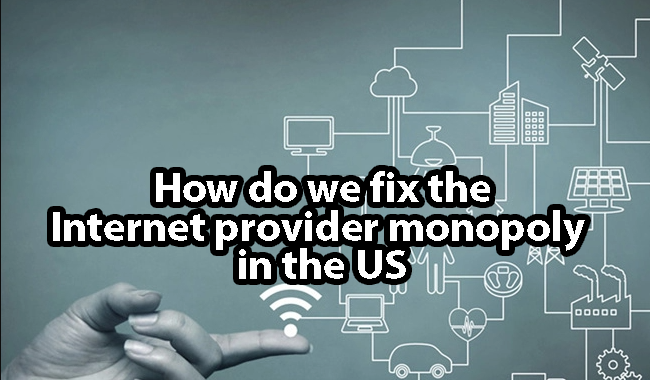See the important points regarding how do we fix the internet provider monopoly in the US? Internet once considered a luxury has now transformed into a necessity. The evolution of the internet has not taken place over a matter of days. It took time as much as two decades to fully evolve and become mainstream.
In the early days, dial-up internet was popular and millennials would remember the annoying noise when connecting to the internet. Offering only a few kilobit speeds, the dial-up network was only capable of browsing websites.
Over time, DSL, cable, and fiber internet became popular, which led to a great revolution and dependency. For instance, the internet is not only used for work purposes, but also for streaming, downloading, socializing, and gaming.
Twice a year, ISPs are required to report about the areas of the country they cover. Data collected by Grounded Reason found the number of choices internet providers have.
| Providers with Downloading Speed 25Mbps | Percentage of Census Block |
| 0 | 27.9 percent |
| 1 | 40.3 percent |
| 2 | 22.6 percent |
| 3 | 6.4 percent |
| 4 and more | 2.8 percent |
The data above suggests that 30 percent of the areas have no access to broadband with ideal speed. 27.9 percent of United States census blocks have access to less than 25Mbps of download speed. Moreover, some areas are struck with monopoly or drought with only a single provider. Around 32 percent of the country has two or more ISPs to choose from offering 25Mbps download speed.
Internet Service Providers with Broadband Monopoly
| Internet Service Provider | Area in Monopoly |
| CenturyLink | 14.77 Percent |
| WOW | 3.80 percent |
| Charter | 56.15 percent |
| Mediacom | 33.67 Percent |
| Verizon | 5.22 percent |
| AT&T | 4.86 percent |
| Cox | 36.21 percent |
| Cable One | 62.80 percent |
| Windstream | 36.76 percent |
| Comcast | 36.72 percent |
| Altice | 58.40 percent |
The data shows only some of the biggest providers in the country. From the above data, it can be seen that more than half of the service areas are served by Altice, Cable One, Charter, and Cox cable companies having regional monopolies. On the other hand, companies like AT&T and Verizon are drastically building networks to enter densely populated census blocks and dominate.
How to Fix Internet Provider Monopoly in the United States?
The data shows that approximately 22.6 percent of American internet users have a choice of two providers in the area. It does not represent monopoly but oligopoly, which is not very different from monopoly, but rather close to it. It could become an issue of being less or more legal according to the U.S competitive laws.
To eradicate monopoly/oligopoly, competition must be established, which can be achieved by requesting other service providers to serve in your area. If the proposal doesn’t look good, there is no compulsion. It is an opportunity for you to establish your own ISP business. You need to look for ideal places to install your relays, set up customer management software, and purchase some hardware. Although the business requires a lot of investment, the ROI is quite high.
You might need to advertise for collaborates and might need to run the project mutually. However, you need to comply with the competition laws in your area to avoid any problems.
Involvement of Government more than Companies
The interest in broadband deployment has developed interest extensively among the public, business, and political stakeholders. The fact is that not every American has access to high-speed internet. However, who should be blamed for broadband competition and monopoly by ISPs in the United States?
People are blaming ISPs more than the government for creating a monopoly, but the truth is that government has to be blamed for everything. Companies can make it difficult for competitors to enter and survive the market, but throttling the competition takes government.
Broadband policy discussion is centered on Federal Communications Commission, yet public utilities and local governments are posing significant barriers to entry.
In addition, deploying broadband infrastructure is not as easy as it seems to be. Just imagine the work required to provide internet to the user from laying underground wires to installing relays, switches, and routers. All of these pre-requisites to deploy infrastructure is a barrier, as local governments make it much costly and difficult.
Before establishing new networks, ISPs must make a deal and negotiate with local governments to grant access to facilitate people by deploying infrastructure. Moreover, internet service providers also need pole attachment contracts to get permission to rent space on utility poles for wires, ducts, and conduits.
The problem is with local governments and public utilities who charge ISPs more than the actual cost. Just take an example of a pole attachment fee that can double the cost.
Summing Up
With the growing demand for high-speed internet, it is the responsibility of government and local bodies to make it easy for ISPs to deploy infrastructure and support them in time of need. Cost and fees should be reduced and subsidized to encourage ISPs to compete in the market.
